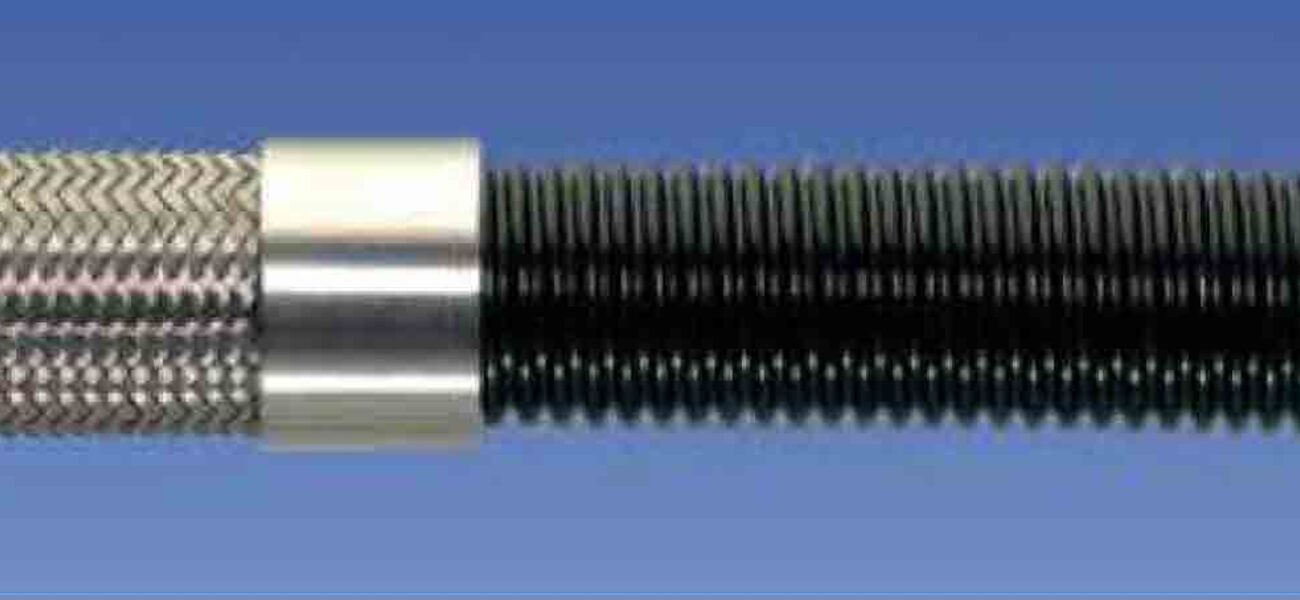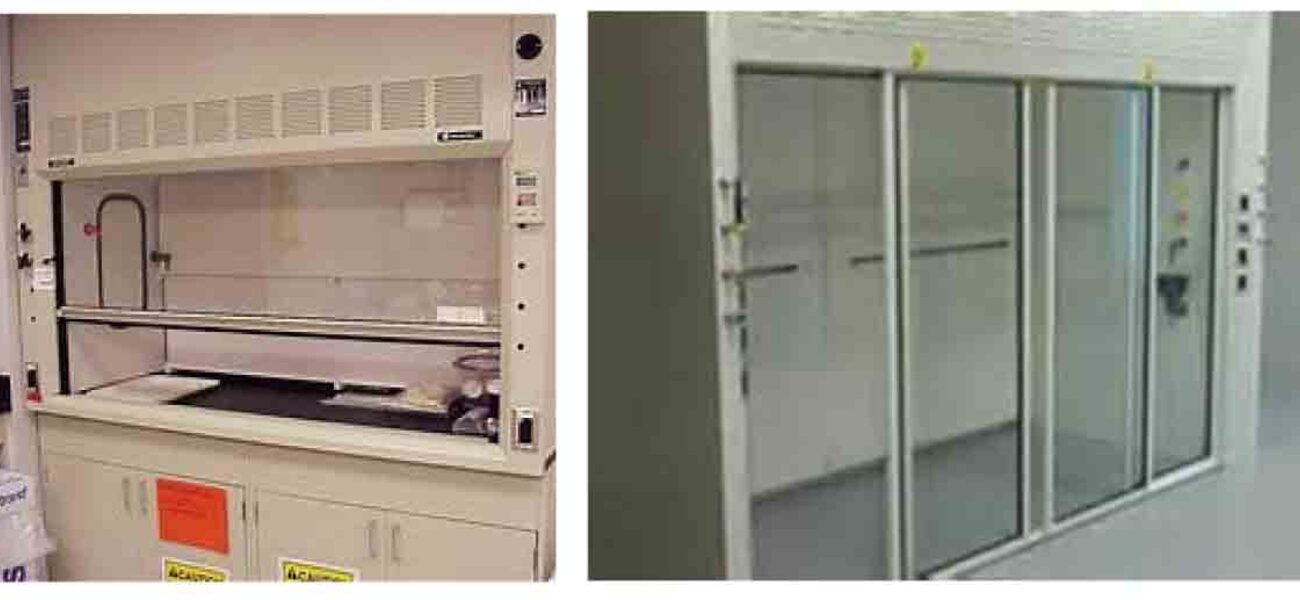Laboratories that handle potentially hazardous or flammable chemicals present a unique challenge for facilities managers charged with providing a safe work environment for students, faculty, and researchers. Jonathan Eisenberg, a fire protection engineer and associate principal in the Boston office of the global engineering and consulting firm Arup, has identified a number of focus areas, ranging from items you might expect (using the appropriate fire suppression methods), to those you might overlook (ensuring that the humidity level is high enough so that people don’t generate sparks from static electricity). It’s important for facilities managers to understand each of the potential risks and to take steps to mitigate them with careful planning, adherence to basic fire safety principles, and the application of recently developed tools and techniques.
Facilities executives who manage research labs must first identify and understand exactly what is being done in the lab. “We don’t pull out the code book right away,” says Eisenberg. “We go and we understand the science first.” What materials are being used? In what quantities? How are they being stored? How are they being processed? What are the conditions in the lab? Then what codes or standards come into play? At a high level, they need to take a variety of design factors into consideration: the placement of full-height fire barriers, deployment of fire prevention and fire suppression systems, installation of special ventilation systems that are isolated from other parts of the building, creating sealed lab environments, even setting up areas with restricted access based on the potential danger of the work being conducted.
Gases, Liquids, and Solids
The first step is identifying potential hazards, and that starts on the elemental and molecular levels, says Eisenberg. Facilities managers need to understand basic gases, liquids, and combustible powders. For example, hydrogen is a highly flammable and potentially explosive gas. Since it’s the lightest element, if there’s a hydrogen leak, the gas floats immediately to the ceiling and sits there. Ignition from unclassified electrical equipment, for example, could cause a serious explosion.
Helium, an inert gas, is far less hazardous than hydrogen, but it’s an asphyxiant, which means it depletes the oxygen concentration in air, so, an undetected helium leak in a confined area could be dangerous. There’s a trend toward changing refrigeration systems from glycol to ammonia because ammonia is more efficient, but ammonia is also flammable, toxic, and can cause asphyxiation. Similarly, carbon monoxide, which is used in certain chemical reactions, is flammable and can also deplete the oxygen in a room. Even carbon dioxide can also be lethal when levels reach a certain threshold.
So, leak detection equipment should be in place; canisters and drums containing these potentially lethal materials need to be stored properly and checked periodically; and potential ignition sources must be kept to a minimum. Procedures need to be in place to adhere to fire codes governing maximum allowable quantities (MAQs) of these types of materials.
Acetonitrile, ethanol, hexane, and heptane are liquid solvents used in life sciences, so a lab doing high-performance liquid chromatography, flash chromatography, or mass spectrometry is likely handling these potentially flammable liquids. “We have clients in commercial life sciences in lab applications that have glass equipment, and they are mixing heptane. It forms a blue halo of charge around the glass. This is scary. If you run into hexane or heptane, both non-polar solvents, that is an alarm bell,” adds Eisenberg.
One effective approach to dealing with solvents is to dilute them to the point where they will not ignite. The traditional way of measuring risk when it comes to flammable or combustible liquids is the flash point—the temperature at which vapor from the liquid will ignite when heat is introduced. Each chemical has a specific threshold for flash point and fire point (the temperature at which a sustainable fire can occur), depending on what percentage of solvent is being used.
Eisenberg says he has clients who take 100 percent ethanol or acetonitrile and dilute it with water down to 30 percent or even 20 percent, which still has a flash point and therefore is flammable. “We have done some testing of 18 percent ethanol and 20 percent ethanol with a couple of different fire points, but neither one of them will sustain a flame,” says Eisenberg.
Just like a fire in a grain silo or a coal mine that’s caused by a dust explosion, combustible powders are also a concern in research labs, where common household materials like starch, sugar, and flour can create a layer of suspended dust just waiting for a spark. Two main approaches to preventing dust explosions are reducing electrical hazards and installing dust collection systems.
Humidification is also important in a lab facility in order to prevent an electrical discharge from flammable liquid transfer across non-metallic surfaces igniting the associated vapors. This applies mostly to northern climes during the winter, where relative humidity could be as low as 5 percent. But the same conditions occur in California, when the dry Santa Ana winds blow. The rule of thumb is to keep humidity level at 30 percent minimally, and preferably closer to 60 percent. Eisenberg concedes that humidification can be expensive, but creating an almost damp environment goes a long way toward reducing the risk of fire.
Other areas of concern and tips on how to deal with them include:
- Ventilated enclosures are a key element of a safe lab, and facilities managers should be aware that equipment which passed muster years ago may not be up to today’s codes. For example, an old-style, one-piece fume hood/storage cabinet that doesn’t have a self-closing, spring loaded latch would not be compliant. Eisenberg recommends using walk-in hoods or dedicated gas cabinets. “The rule of thumb is that you need to go to the codes and standards to find out when you need a gas cabinet. But in general, if you have a flammable gas or corrosive gas or an oxidizing gas, you have to go there. If you exceed the MAQ, then the gas needs to be in a gas cabinet. However best practice, in my opinion, I really want to see flammable gases in a gas cabinet.”
- Plastic piping and containers are becoming popular in research labs, often replacing stainless steel process piping and metal containers. While plastic may be less expensive, it has thrown a monkey wrench into long-standing electrical grounding techniques designed to prevent liquid from producing a static charge. “There are hazards that come with that, because we can’t ground and bond like we always thought we could,” says Eisenberg. New types of piping now on the market use a static-dissipative plastic liner inside of a thin, braided stainless shell, which allows the outer shell to be grounded.
- Fume hoods pose two potential issues. First, most fume hoods don’t come with classified electrical systems inside the hood, so it’s not uncommon for lab users to buy an inexpensive power strip and plug multiple devices into it. Eisenberg recommends that facilities managers buy a ground fault circuit interrupter (GFCI) specially designed for fume hoods. GFCIs detect dangerous ground faults and immediately turn off the power to stop shocks. To combat fires inside a fume hood, facilities managers are turning to a relatively new mode of fire suppression known as water mist. Traditionally, dry chemical systems have been used inside floor mounted fume hoods. While effective at putting out the fire, dry chemicals destroy the equipment. With water mist, tiny water droplets released at high pressure create a fog effect, which suppresses the fire, preserves the equipment, and doesn’t require as much of a cleanup as a traditional sprinkler system.
- Keeping up with changes over time can be a major challenge. It is critical to maintain good drawings of fire-rated walls, penetrations, and glazing in case of a renovation, and to keep a running inventory of how much of a certain material is being stored in each space. Eisenberg says the best example he’s seen is a commercial lab facility in South San Francisco that sticks barcodes on the doorframes of the labs and another barcode on each item brought into the lab. The bar code is swiped when the material enters the building, and again when it enters its destination, where the barcode on the doorframe is also swiped. That creates an accurate record of where materials are located in the building, and a real-time inventory of everything in the room.
You don’t need to be a scientist to achieve safe operations in laboratory facilities, says Eisenberg. But you do need to understand the science that’s going on, the materials, how they are being used and processed, and the conditions inside the facility. Then you need to apply the latest tools and techniques to create a safe working environment.
By Neal Weinberg
| Organization |
|---|
|
Arup
|

